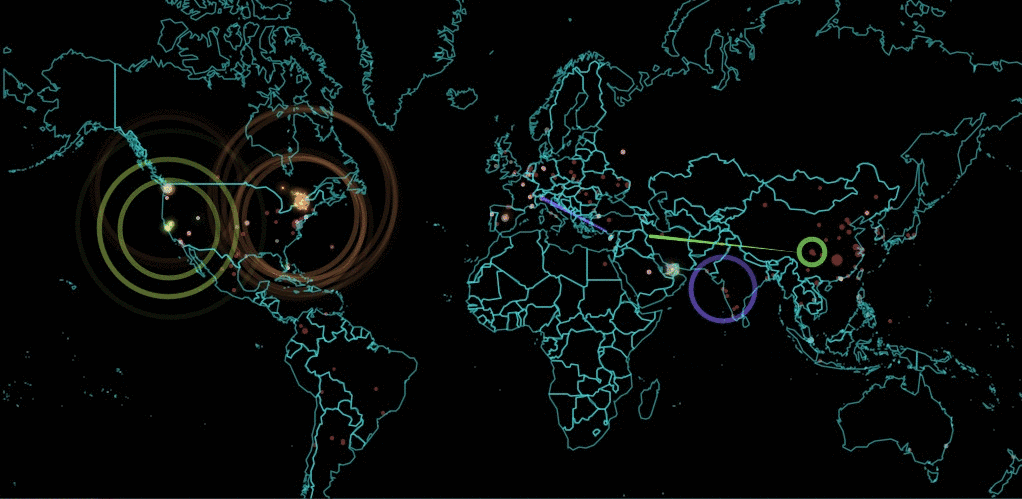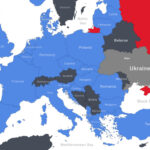 In a Wired article titled, “How an Entire Nation Became Russia’s Test Lab for CyberWar,” Andy Greenberg sheds light on how Russia is fine tuning its cyber assault capabilities by using the Ukraine as a living laboratory for cyberwarfare. “These coordinated attacks are unlike anything the world has seen”, says Andy Greenberg. A Russian group known as Sandworm is using BlackEnergy, a Trojan malware designed to launch denial-of-service (DDoS) attacks to gain access to servers for reconnaissance. Once access is gained, KillDisk a data-destroying malware is injected for destruction. The malware evaded antivirus scans and lurked undetected until called upon.
In a Wired article titled, “How an Entire Nation Became Russia’s Test Lab for CyberWar,” Andy Greenberg sheds light on how Russia is fine tuning its cyber assault capabilities by using the Ukraine as a living laboratory for cyberwarfare. “These coordinated attacks are unlike anything the world has seen”, says Andy Greenberg. A Russian group known as Sandworm is using BlackEnergy, a Trojan malware designed to launch denial-of-service (DDoS) attacks to gain access to servers for reconnaissance. Once access is gained, KillDisk a data-destroying malware is injected for destruction. The malware evaded antivirus scans and lurked undetected until called upon.
The Cyber-Cassandras said this would happen. For decades they warned that hackers would soon make the leap beyond purely digital mayhem and start to cause real, physical damage to the world. In 2009, when the NSA’s Stuxnet malware silently accelerated a few hundred Iranian nuclear centrifuges until they destroyed themselves, it seemed to offer a preview of this new era. “This has a whiff of August 1945,” Michael Hayden, former director of the NSA and the CIA, said in a speech. “Somebody just used a new weapon, and this weapon will not be put back in the box.”
Now, in Ukraine, the quintessential cyberwar scenario has come to life. Twice. On separate occasions, invisible saboteurs have turned off the electricity to hundreds of thousands of people. Each blackout lasted a matter of hours, only as long as it took for scrambling engineers to manually switch the power on again. But as proofs of concept, the attacks set a new precedent: In Russia’s shadow, the decades-old nightmare of hackers stopping the gears of modern society has become a reality.
And the blackouts weren’t just isolated attacks. They were part of a digital blitzkrieg that has pummeled Ukraine for the past three years—a sustained cyberassault unlike any the world has ever seen. A hacker army has systematically undermined practically every sector of Ukraine: media, finance, transportation, military, politics, energy. Wave after wave of intrusions have deleted data, destroyed computers, and in some cases paralyzed organizations’ most basic functions. “You can’t really find a space in Ukraine where there hasn’t been an attack,” says Kenneth Geers, a NATO ambassador who focuses on cybersecurity. […]
[…] IT admins examined the image they’d kept of one of the corrupted servers. Its master boot record, the deep-seated, reptile-brain portion of a computer’s hard drive that tells the machine where to find its own operating system, had been precisely overwritten with zeros. This was especially troubling, given that the two victim servers were domain controllers, computers with powerful privileges that could be used to reach into hundreds of other machines on the corporate network. […]
[…] Looking at the attackers’ methods, Lee began to form a notion of who he was up against. He was struck by similarities between the blackout hackers’ tactics and those of a group that had recently gained some notoriety in the cybersecurity world—a group known as Sandworm. In 2014 the security firm FireEye had issued warnings about a team of hackers that was planting BlackEnergy malware on targets that included Polish energy firms and Ukrainian government agencies; the group seemed to be developing methods to target the specialized computer architectures that are used for remotely managing physical industrial equipment. The group’s name came from references to Dune found buried in its code, terms like Harkonnen and Arrakis, an arid planet in the novel where massive sandworms roam the deserts.
No one knew much about the group’s intentions. But all signs indicated that the hackers were Russian: FireEye had traced one of Sandworm’s distinctive intrusion techniques to a presentation at a Russian hacker conference. And when FireEye’s engineers managed to access one of Sandworm’s unsecured command-and-control servers, they found instructions for how to use BlackEnergy written in Russian, along with other Russian-language files.
Most disturbing of all for American analysts, Sandworm’s targets extended across the Atlantic. Earlier in 2014, the US government reported that hackers had planted BlackEnergy on the networks of American power and water utilities. Working from the government’s findings, FireEye had been able to pin those intrusions, too, on Sandworm.
Cyber Attack Map Snapshot – Attacks Around the world using Norse’s cyber attack map. Click on the map to view it in real-time.
For Lee, the pieces came together: It looked like the same group that had just snuffed out the lights for nearly a quarter-million Ukrainians had not long ago infected the computers of American electric utilities with the very same malware. […]
As Lee and Assante had noticed, the malware that infected the energy companies hadn’t contained any commands capable of actually controlling the circuit breakers. Yet on the afternoon of December 23, Kyivoblenergo employees had watched helplessly as circuit after circuit was opened in dozens of substations across a Massachusetts-sized region, seemingly commanded by computers on their network that they couldn’t see. In fact, Kyivoblenergo’s engineers determined that the attackers had set up their own perfectly configured copy of the control software on a PC in a faraway facility and then had used that rogue clone to send the commands that cut the power.
Once the circuit breakers were open and the power for tens of thousands of Ukrainians had gone dead, the hackers launched another phase of the attack. They’d overwritten the firmware of the substations’ serial-to-ethernet converters—tiny boxes in the stations’ server closets that translated internet protocols to communicate with older equipment. By rewriting the obscure code of those chunks of hardware—a trick that likely took weeks to devise—the hackers had permanently bricked the devices, shutting out the legitimate operators from further digital control of the breakers. Sitting at the conference room table, Assante marveled at the thoroughness of the operation.
The hackers also left one of their usual calling cards, running KillDisk to destroy a handful of the company’s PCs. But the most vicious element of the attack struck the control stations’ battery backups. When the electricity was cut to the region, the stations themselves also lost power, throwing them into darkness in the midst of their crisis. With utmost precision, the hackers had engineered a blackout within a blackout.
“The message was, ‘I’m going to make you feel this everywhere.’ Boom boom boom boom boom boom boom,” Assante says, imagining the attack from the perspective of a bewildered grid operator. “These attackers must have seemed like they were gods.”[…]
Read more here.






